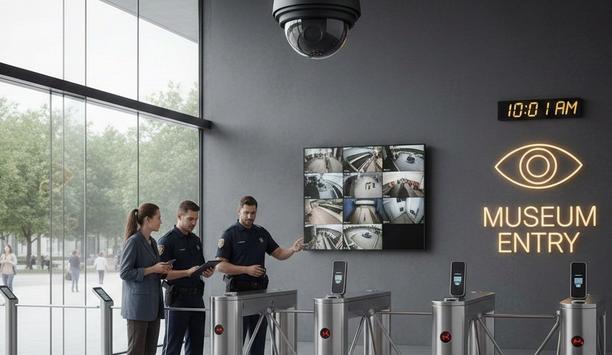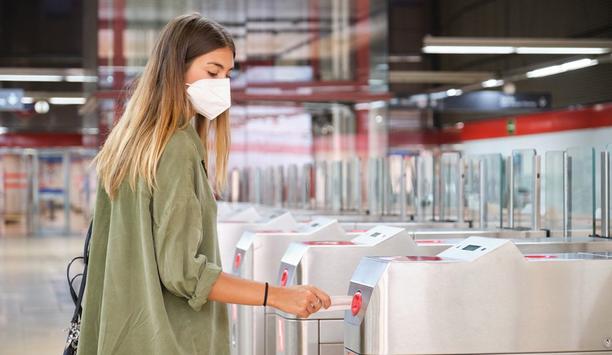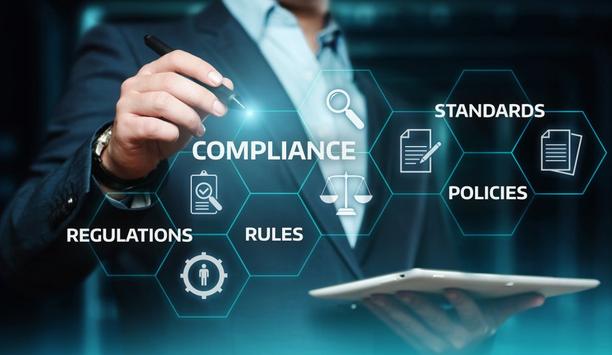Check Out Our Special Report On Casino Security
What Will Be The Impact Of 'Hot Desking' On The Security Marketplace?
- Hot desking increases demand for flexible security solutions in offices.
- Office security systems must adapt to dynamic, shared desk environments.
- Enhanced cybersecurity needed to protect data in hot desking arrangements.
Editor Introduction
With fewer employees working in the office, and more of them working from home, it is no longer necessary for each employee to have their ‘own’ desk. Rather, desks may be used by various people at different times, as needed on an ad hoc basis. This arrangement, known as ‘hot desking,’ maximises space efficiency and reduces unneeded office space. We asked this week’s Expert Panel Roundtable: What will be the impact of ‘hot desking’ on the security marketplace?
‘Hot desking’ is a great way to counteract underused office space, which has resulted from many people now preferring hybrid – or even completely remote – working. However, many businesses are struggling to find the happy medium when it comes to ’hot desking.’ The key lies in accessing existing data in a way that prioritizes collaboration, inclusivity, and most importantly, employee safety. Intelligent systems like cloud video security and workplace sensors can increase situational awareness: Occupancy counting monitors the number of people who are in and out of designated spaces; sensors detect of the presence of people at specific desk locations. The system is directed by desk-booking software. Office managers can use this to have a better picture of the busiest days, with insights like whether employees are using their booked spaces properly, and which high traffic areas will need more frequent cleaning. There is always a balancing act of privacy and security. Therefore, these solutions can provide awareness of when doors in certain areas open, but still maintain the anonymity of the person entering or leaving the room. Such innovation removes guesswork and consequently makes the security marketplace, by way of the office, smarter and more adaptive.
The move to ‘hot desking’ and hybrid working in general will see a lot more movement of people, which has obvious implications for security. For example, the use of lockers and cabinets to store valuables and confidential materials will become even more important, which is an ideal application for wireless locks. Occupancy management is another security facet that is essential for this hybrid working environment. With the numbers of people fluctuating, it is important to ensure facilities are not overcrowded, and also to manage the use of utilities (lighting, heating, air conditioning etc.) as appropriate to requirements. More broadly, this data enables an organization to assess whether it has too much or too little workspace, which is vital when it comes to renting requirements (a hefty bill for business!) It will also be essential that security and access control be fully integrated with the IT infrastructure (such as Active Directory) to ensure sign-on access to these systems as well as physical access to a facility. This is also where the use of smartphone credentials will be invaluable, as facilities become increasingly automated, and tokens/cards become less practical to deploy and use.
Salient’s CompleteView solution lends itself to ‘hot desking’ in that users can efficiently monitor their systems from our web and mobile clients anywhere and most importantly, perform all system tasks from a lightweight, moderately appointed laptop. This is because we perform Dynamic Resolution Scaling at the server and only send the necessary pixels to the client, reducing the hardware requirements and network utilization. Other VMS solutions utilize multi-streaming to alleviate the burden on the client, but that can increase bandwidth on the network. For systems with active monitoring and dispatch operations, ‘hot desking’ is not a viable option – many of these are run from command centers or security offices that are typically equipped with large video walls and multiple operators sitting at positions that are defined by the task and not the person occupying the chair.
Editor Summary
‘Hot desking’ requires that access control and occupancy be monitored more closely. Technology features of various security systems contribute to a successful approach to optimize utilization of physical and real estate assets. Full integration of security and access control systems with the IT infrastructure also enables a ‘hot desking’ approach.
- Related companies
- TDSi
- Salient Systems
- Ava Security
- Related links
- TDSi Access control software
- TDSi Electronic lock systems
- Biometric Access control software
- Access Control Software Access control software
- TFT LCD Security Monitors
- Broadcast Messenger Access control software
- Contact Access control software
- Mifare Access control software
- Proximity Access control software
- Carpool Anti-passback Access control software
- Central Monitoring Option Access control software
- Smart Card Access control software
- Combined online/offline solution Access control software
- Door Monitoring Option Access control software
- Face Recognition Software Access control software
- Guard tool module Access control software
- Issuance and identification system Access control software
- Keypad Commands/Intrusion Zones Access control software
- License Access control software
- Management Systems Upgrade Access control software
- NetVue Interface to Intellex Access control software
- Redundant System Software Access control software
- Reporting Option Access control software
- Server software for MSDE Access control software
- Version Upgrade Access control software
- Related categories
- Access control software
- Electronic lock systems
- Security Monitors
- View all news from
- TDSi
- Salient Systems
- Ava Security
Expert commentary
Security beat
The Key To Unlocking K12 School Safety Grants
DownloadHoneywell GARD USB Threat Report 2024
DownloadPhysical Access Control
DownloadThe 2024 State Of Physical Access Trend Report
DownloadThe Security Challenges Of Data Centers
DownloadKentixONE – IoT Access And Monitoring For Data Centers
Climax Technology HSGW-Gen3 Modular Smart Security Gateway
Delta Scientific DSC50 ‘S’ Barrier: Portable, Crash-Rated Vehicle Mitigation Solution























